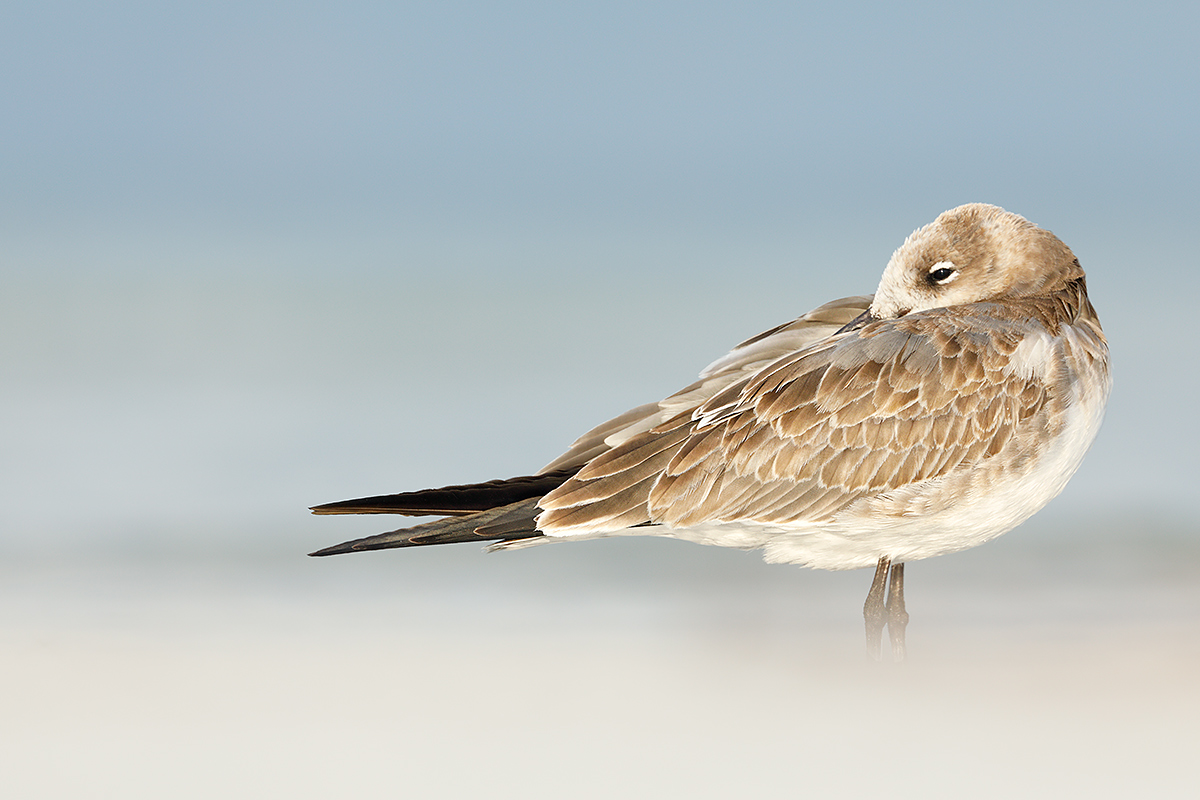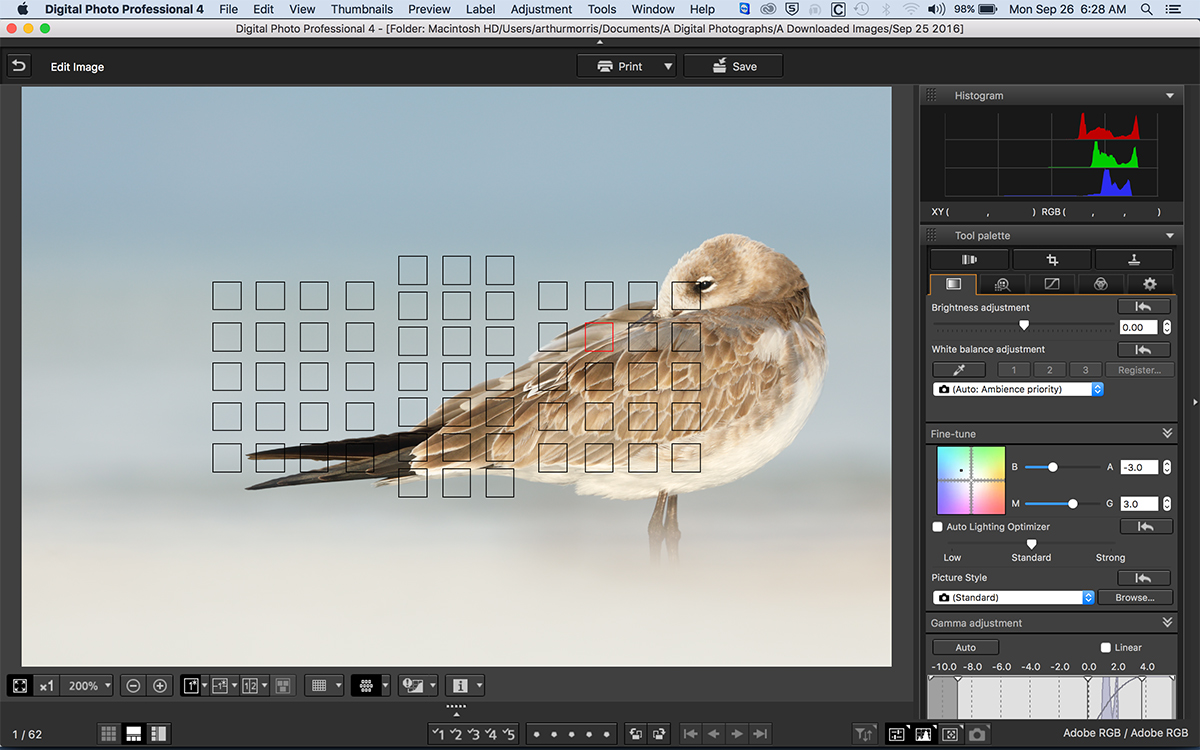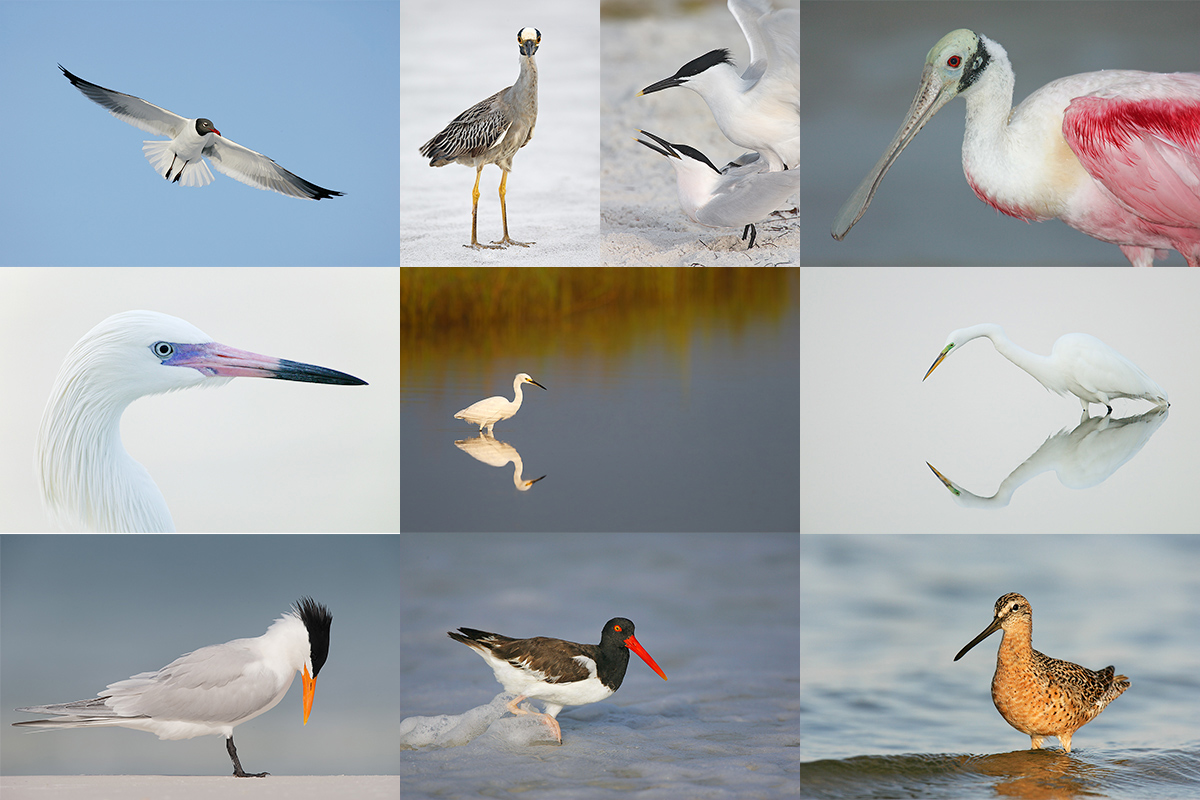What’s Up?
I am on Bleaker Island in The Falklands. Our stay on Saunders Island was truly amazing. George G. made one of the very best avian images I have ever had the pleasure to see. I will share it with you hear at some point. I am feeling great after the surgery and beat my cold after about a week. The last thing that I wanted was to get on the Sea Spirit sick…
Jim and Jen are at the office most days to help you with your mail order needs and Instructional Photo-Tour sign-ups. I still need folks for San Diego, Japan, Galapagos, the Palouse, and the Bear Boat (Grizzly Cubs) trips. Among others 🙂 Please e-mail for couples and discount info for all of the above. Click here for complete IPT info.
I will have internet access for all but 22 OCT thru 11 NOV while I am on the Sea Spirit. Best and great picture making, artie
Gear Questions and Advice
Too many folks attending IPTs and dozens of the folks whom I see in the field, and on BPN, are–out of ignorance–using the wrong gear, especially when it comes to tripods and more especially, tripod heads… Please know that I am always glad to answer your gear questions via e-mail.
The Streak: 342!
Today’s blog post marks a totally insane, irrational, illogical, preposterous, absurd, completely ridiculous, unfathomable, silly, incomprehensible, what’s wrong with this guy?, makes-no-sense, 342 days in a row with a new educational blog post. There should be no end in sight until my big South America trip next fall. Or not… As always-–and folks have been doing a really great job recently–-please remember to use our B&H links for your major gear purchases. For best results use one of our many product-specific links; after clicking on one of those you can continue shopping with all subsequent purchases invisibly tracked to BAA. Your doing so is always greatly appreciated. Please remember: web orders only. And please remember also that if you are shopping for items that we carry in the new BAA Online Store (as noted in red at the close of this post below) we would appreciate your business.
|
This image was created on my Fort DeSoto IPT scouting trip with the hand held Canon EF 400mm f/4 DO IS II USM lens, the Canon Extender EF 1.4X III, and the Canon EOS 5D Mark IV . ISO 500. Evaluative metering +1 stop: 1/500 sec. at f/8 in Manual mode. AWB. I selected and AF point that was three AF points to the right and one row up from the center AF point/AI Servo Expand/Rear Focus AF as framed was active at the moment of exposure (as is always best when hand holding). See the exact placement of the selected AF point in the DPP 4 screen capture below. Laughing Gull molting to first winter plumage–resting |
Heavenly Rest…
This young Laughing Gull, molting into first winter plumage, was quite the cooperative subject. I photographed it while standing at full height, while seated, and while lying down in the soft sand. (I think that “lying” is correct but despite spending hours trying to understand lie versus lay along with the conjugations I am in no way sure that “lying” is correct…) All of the light brown feathers edged in white are the worn juvenile feathers. The few grey feathers–I am not sure if they are greater coverts or scapulars (or both)–are fresh, newly grown feathers. When the molt is complete in a few weeks the bird will exhibit the classic grey saddled look of first winter plumage as seen in many gull, tern, and shorebird species in fall and early winter.
While seated I was able to see the legs completely; the feet were obscured by the shallow water. I love the in heaven look that we see here. You can put any beach bird in heaven by getting low enough to include some out-of-focus sand in the foreground.
The Strengths of This Image
1- Having the bird perfectly parallel to the back of the camera is a big plus for me. When birds are resting like this or even when fully asleep they are constantly angling their body this way and that, sort of teetering from side to side. Once you have the framing that you want be sure to create lots of images quickly so that you wind up with a perfect subject to sensor plane orientation.
2- With about 2 1/2 times as much space from the tip of the tail to the left frame-edge as there is from the front of the breast to the right frame-edge the side to side framing is perfect.
3-And the same goes for the top to bottom framing with just a bit more room from the top of the head to the upper frame-edge than from the spot where the legs disappear to the bottom frame-edge.
4-The soft light and partially opened eye are both pluses, as is just the hint of the bird’s bill.
5- I did my best to avoid breaking waves in the background and succeeded admirably to that end with this frame. That is another reason to create lots of images once everything looks good…
Your Call…
Would you have framed this image differently? If yes, in what what way and why?
The DPP 4 Screen Capture for today’s featured image |
The DPP 4 Screen Capture For Today’s Featured Image
In this case I might have been better off selecting the upper right-most AF point and putting it squarely on the bird’s eye but was worried that it might have negatively affected the image design. Instead, I chose to put the selected AF point on the bird’s upper back at a point that was on the same plane as its eye. Note also the pretty much perfect histogram. Lastly, as the image was on the warm side with more R than G and B, I moved the color Fine Tuner away from red. This gave me bluer water in the background.
After converting the image in DPP 4 I brought the image into Photoshop, applied my NIK Color Efex Pro 25/25 recipe to the bird only after selecting it with the Quick Selection Tool, and add a bit of a Contrast Mask as well. After adding a Regular Layer Mask I erased 66% of the effect (with two passes of a 33% opacity brush) from the bird’s face to keep it from looking to crunchy. Everything above plus tons more is of course detailed in my Digital Basics File, an instructional PDF that is sent via e-mail. It includes my complete (former PC) digital workflow, dozens of great Photoshop tips, details on using all of my image clean-up tools, the use of Contrast Masks, several different ways of expanding and filling in canvas, all of my time-saving Keyboard Shortcuts, the basics of Quick Masking, Layer Masking, and NIK Color Efex Pro, Digital Eye Doctor techniques, using Gaussian Blurs, Dodge and Burn, a variety of ways to make selections, how to create time-saving actions, and tons more.
|
DeSoto in spring is rife with tame and attractive birds. From upper left clockwise to center: breeding plumage Dunlin, dark morph breeding plumage Reddish Egret displaying, breeding plumage Laughing Gull/front end vertical portrait, breeding plumage Laughing Gull with prey item, Laughing Gull on head of Brown Pelican, screaming Royal Tern in breeding plumage, Royal Terns/pre-copulatory stand, Laughing Gulls copulating, breeding plumage Laughing Gull/tight horizontal portrait, Sandwich Tern with fish, and a really rare one, White-rumped Sandpiper in breeding plumage, photographed at DeSoto in early May. |
Fort DeSoto Spring IPT/April 19-22, 2017. (meet & greet at 2pm on Wednesday April 19 followed by an afternoon session) through the full day on Saturday April 22. 3 1/2 DAYs: $1599. Limit 10. I will be offering small group (Limit 3) Photoshop sessions on Sunday afternoon and Monday morning if necessary. Details on that TBA.
Fort DeSoto is one of the rare locations that might offer great bird photography 365 days a year. It shines in spring. There will Lots of tame birds including breeding plumage Laughing Gull and Royal and Sandwich Terns. With luck, we will get to photograph all of these species courting and copulating. There will be American Oystercatcher and Marbled Godwit plus sandpipers and plovers, some in full breeding plumage. Black-bellied Plover and Red Knot in stunning breeding plumage are possible. There will be lots of wading birds including Great and Snowy Egrets, both color morphs of Reddish Egret, Great Blue, Tricolored and Little Blue Heron, Yellow-crowned Night-Heron, and killer breeding plumage White Ibis. Roseate Spoonbill and Wood Stork are possible and likely. We should have lots of good flight photography with the gulls and terns and with Brown Pelican. Nesting Least Tern and nesting Wilson’s Plover are possible.
We will, weather permitting, enjoy 7 shooting sessions. As above, our first afternoon session will follow the meet and greet at 2pm on Wednesday April 19. For the next three days we will have two daily photo sessions. We will be on the beach early and usually be at lunch (included) by 11am. We will have three indoor sessions. At one we will review my images–folks learn a ton watching me choose my keepers and deletes–why keep this one and delete that one? The second will be a review of your images so that I can quickly learn where you need help. For those who bring their laptops to lunch I’d be glad to take a peek at an image or three. Day three will be a Photoshop session during which we will review my complete workflow and process an image or two in Photoshop after converting them in DPP. Afternoon sessions will generally run from 4:30pm till sunset. We photograph until sunset on the last day, Saturday, April 22. Please note that this is a get-your-feet and get-your-butt wet and sandy IPT. And that you can actually do the whole IPT with a 300 f/2.8L IS, a 400 f/4 ID DO lens with both TCs, or the equivalent Nikon gear. I will surely be using my 500 II as my big glass and have my 100-400 II on my shoulder.
|
DeSoto in spring is rife with tame and attractive birds. From upper left clockwise to center: Laughing Gull in flight, adult Yellow-crowned Night-Heron, copulating Sandwich Terns, Roseate Spoonbill, Great Egret with reflection, Short-billed Dowitcher in breeding plumage, American Oystercatcher, breeding plumage Royal Tern, white morph Reddish Egret, and Snowy Egret marsh habitat shot. |
What You Will Learn
You will learn to approach free and wild birds without disturbing them, to understand and predict bird behavior, to identify many species of shorebirds, to spot the good situations, to understand the effects of sky and wind conditions on bird photography, to choose the best perspective, to see and understand the light, to get the right exposure every time after making a single test exposure, and to design pleasing images by mastering your camera’s AF system. And you will learn how and why to work in Manual mode (even if you are scared of it).
The group will be staying at the Red Roof Inn, St. Petersburg: 4999 34th St. North, St Petersburg, FL 33714. The place is clean and quite inexpensive. Please e-mail for room block information. And please call Jim or Jennifer at 863-692-0906 to register. All will need to purchase an Annual Pass early on Tuesday afternoon so that we can enter the park at 6am and be in position for sunrise opportunities. The cost is $75, Seniors $55. Tight carpools will be needed and will reduce the per person Annual Pass costs. The cost of three lunches is included. Breakfasts are grab what you can on the go, and dinners are also on your own due to the fact that we will usually be getting back to the hotel at about 9pm. Non-photographer spouses, friends, or companions are welcome for $100/day, $350 for the whole IPT.
Please Remember to use my Affiliate Links and to Visit the New BAA Online Store 🙂
To show your appreciation for my continuing efforts here, we ask, as always, that you get in the habit of using my B&H affiliate links on the right side of the blog for all of your photo and electronics purchases. Please check the availability of all photographic accessories in the New BIRDS AS ART Online Store, especially the Mongoose M3.6 tripod head, Wimberley lens plates, Delkin flash cards and accessories, and LensCoat stuff.
As always, we sell only what I have used, have tested, and can depend on. We will not sell you junk. We know what you need to make creating great images easy and fun. And we are always glad to answer your gear questions via e-mail.
I would of course appreciate your using our B&H affiliate links for all of your major gear, video, and electronic purchases. For the photographic stuff mentioned in the paragraph above we, and for everything else in the new store, we, meaning BAA, would of course greatly appreciate your business. Here is a huge thank you to the many who have been using our links on a regular basis and those who will be visiting the New BIRDS AS ART Online Store as well.
Be sure to like and follow BAA on Facebook by clicking on the logo link upper right. Tanks a stack!
Typos
In all blog posts and Bulletins, feel free to e-mail or to leave a comment regarding any typos or errors. Just be right 🙂


















Lie: yourself. I’m lying down. She lied in bed all day. Donald Trump lies (OK, not the same).
Lay: something else. The workers are laying bricks, I laid the book on the table, etc.
All semantics aside, what I love is the way the feet are hidden as the foreground slowly fades out of focus. I might have put the bird just a smidgeon more toward center but other than that it’s awesome.
She lay in the bed all day lying, therefore, she lied as she lay in the bed.
I think the bird belongs on the right for all the reasons James gives but a tad more space to the edge of the frame may not go amiss.
I may have moved the bird to the left a little but not much to get it away from the right edge of the frame. The way the head and bill are tucked help move you from right to left and that also follows the line of the birds back. The feather detail and shape moves your eye from top to bottom to the left of the bird. Great image, love the dreamy looking foreground.
You could avoid the controversy by saying that you were flopped on your belly in the sand. 🙂
Another lovely shot, I would have probably framed it in the center, but then I have a bad tendency to do that too much, a habit developed long ago that I am trying to break.
I would move the bird slightly to the left. I think it crowds the right side of the frame a little. But this is nit picking. It is a beautiful image.
I love this image ad would not change a thing. Wish it were mine!!!
Just curious.
Why did you not focus on the eye please?
I see that this could be achieved with the most TOP right af point.
Thanks for your reply
Danny
AF points closer to the center are more effective. In addition, the eyes of bird’s are very small in relation to the rest of the bird; it can be difficult to get the exact AF point on the eye and you will often lose AF in such cases. With the AF point on the body in the very close vicinity of the plane of the eye, AF is much surer and you have some room for error.
a
“Laying” is what you do to an object other than yourself. “Lying” is what you yourself do. Another Brit speaking!
Depend on context (as always!) and tense but the past tense is where it gets all messed up and the context is whether that action is complete or not.
I photographed it while lying down… (the state of being on the floor was an ‘ongoing’ action)
I photographed it having laid down…(the action of lying down had finished)
I lay down on the sand and photographed it… (the action of lying down had finished)
Oh, the joys of the English language.
And yes, I am avoiding having to go back to work 🙂
Hello to the “Tenacious” Marie Read, I Love your work, have read many of your articles over the years. The interview I saw with you as you spoke about the sheer tenacity you take into the field still inspires me today. So good to see you, many blessings.
FYI… In the UK, we would say “lying”! You are correct 🙂
Hllo
why you no used only central point and then recomose with rear focus ?
Thanks
Sometimes I do, sometimes I don’t. But when hand holding it is much, much better to have AF active at the moment of exposure…
a